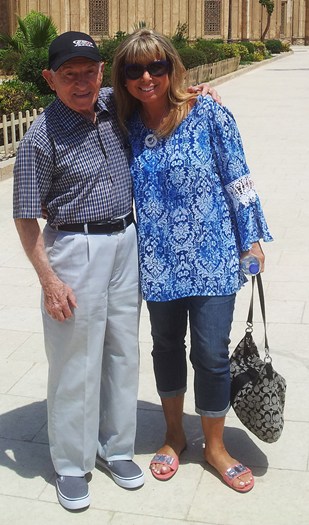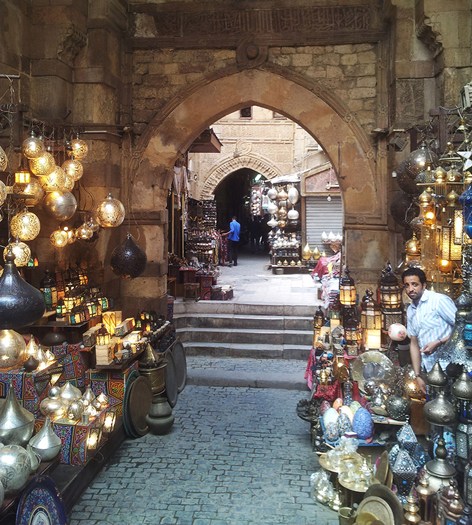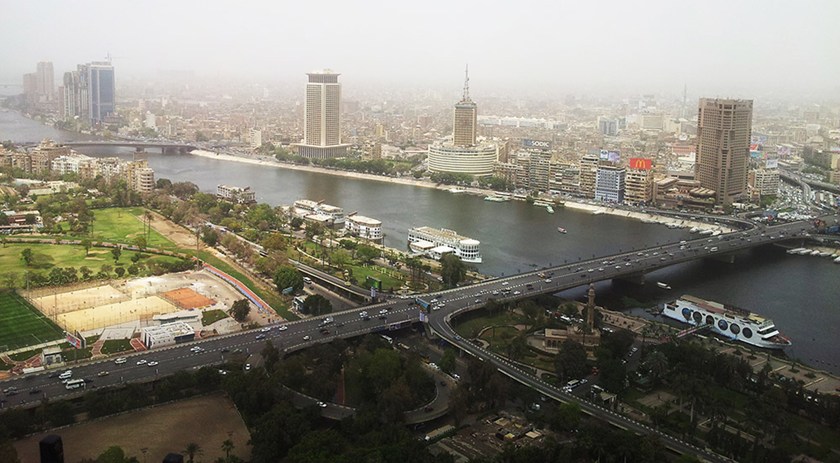CAIRO - I never dreamt I would travel to Egypt with my 90-year-old father. In fact, it came about quite suddenly — dad informed me a cousin was getting married in Cairo and he did not wish to travel alone.
Wow, two weeks in Egypt. I couldn’t believe my luck.
As our flight approached Cairo’s International airport, the terrain became rugged with variations of beige, tan and brown. Flat-roofed buildings stretched out as far as the eye could see. Soon, the majesty of the Nile River came into sight and as the plane descended further, I could see gridlock traffic everywhere. Welcome to Cairo! The excitement of this ancient city hit me the moment we left the plane. The hustle and bustle is simply overwhelming. This is a city where east meets west head on … like a head-on collision.
The Greek historian Herodotus described Egypt as the gift of the Nile. In fact, if not for the river, Egypt would not be the country it is today.
The contrasts and contradictions of this metropolis are mind boggling, especially to someone with a western sensibility.
As we begin discovering Cairo, I quickly notice the many European influences this city exhibits in architecture and city planning. In fact, Egypt’s capital reflects a past that is closely connected to western influence.
During the reign of Khedive Ismail (1830-1895), Cairo began its transformation to modernization — tramways, railroads and the building of the Suez Canal all took place under his watch. That’s when Egypt became the darling of Europe and a focus of world attention. With the arrival of the French, then the British, Egypt soon became an exotic destination for Europeans looking for warmer climates. Beautiful French and Edwardian-style palace-hotels were built along the Nile catering to tourists and expats. These hotels, which still exist, albeit renovated and part of global brands, have a cache eliciting admiration from older generations of Cairenes.


Left: Anny and her father sightseeing. Right: The local markets in Cairo are filled with local treasures.
Our explorations take us to the magnificent historic site, Saladin Citadel, an Islamic fortification in the centre of the city, which provides amazing vistas.
We spend an afternoon discovering Khan Al-Khalili, a souk dating to the 14th century, with its labyrinth of high-walled, narrow alleys, featuring some of the original Mamluk-style architecture — massive archways and vaulted ceilings. Loud and exciting, it’s filled with smells, foods and sights, a real onslaught on the senses. Vendors from the fabric shops, carpet stores, jewellry shops and antique stores all vie for our attention, making it difficult to concentrate on what to buy. You just have to keep smiling and move on.
What I did want was some Egyptian mint tea, which I purchased at the spice market in the souk. An eye-popping experience with every spice imaginable lining the shelves of the turn-of-the-century store. My mint tea is quite extraordinary.
We stop for coffee at the 250-year-old Al Fishawy café in the souk. With its mirrored walls, wooden chairs and rickety brass-topped tables, it was the perfect place to sit back and marvel at the sheer amazement of being in Khan Al-Khalili.
Beautiful, hectic and enchanting, Cairo is a sprawling metropolis that never sleeps. A mélange of temples, tombs, spectacular Christian churches, Muslim monuments and the Pyramids at Giza keep tourists busy during the day, while uniquely Egyptian restaurants, waterside dining and nightlife, some featuring Baladi (belly) dancers, simply take your breath away.
But as a result of the 2011 revolution, the recent political upheavals, the bombings, the shootings and the unrest in this country, the pace of incoming tourists has trickled to nothing and security is very stringent everywhere. As we head towards the Pyramids, our tour guide Mohammed explains that without the throngs of tourists, the vendors are more aggressive.

Above: Cairo is a sprawling metropolis that drops off into the mighty River Nile.
“Don’t begin the haggling unless you are serious about purchasing,” he advices us. And true to his word, the moment we disembark the bus at the Pyramids, vendors swarm us, hawking their wares, from trinkets to mini pyramids, packets of postcards to bottles of water.
The Pyramids are everything you’ve imagined, and more. However, my favourite was the Sphinx, which I find stunningly beautiful. And how can I forget the excitement of my camel ride. It left me grinning from ear-to-ear for several hours. I can now happily cross it off my bucket list.
No trip to Cairo is complete without a visit to the Museum of Egyptian Antiquities. Situated on the now-famous Tahrir Square, it didn’t surprise me to find a large phalanx of tanks, stern-looking soldiers and sentries guarding the museum. We were specifically warned not to take pictures.
Home to an extensive collection of ancient Egyptian antiquities, the museum boasts more than 120,000 items including jewels, mummies and Tutankhamen treasures, including a hand-carved ceremonial chariot made of gilded wood.
While visiting the Cairo Tower (perched 187 metres above the city), young Egyptian boys want to take selfies with my white-haired, 90-year-old dad “because he speaks Arabic” like them. This happened again and again, including young Muslim female students who ask to take selfies with us at the Library in Alexandria.
Our visit to Alexandria is short, but wonderful. Beautiful blue skies make our pilgrimages to the Montazah Palace and Gardens, the Stanley Bridge, the Corniche and the world famous library a real joy.
What was once a cosmopolitan centre at the crossroads of ancient civilizations, is now a crowded, bustling seaside city with very few Europeans left. Alexandria’s more than six million population is predominately young (under 30) and Muslim, like the rest of the country. Like Cairo, the traffic during the day is incomprehensible, with few traffic lights. Boulevards are shared by cars, scooters and donkey-drawn carriages and carts alongside merchants selling their wares. Sadly, beautiful old buildings have been unattended, left to become slums, or knocked down to give way to residential high-rises, some of which have been left unfinished for decades.
The 2011 uprising in Cairo effected the entire country and local and expat communities (what’s left) were at the time of the revolution forced into protecting their families and properties by barricading their streets and standing watch with weapons 24-hours a day.
We attended our cousin’s wedding in Cairo — an extravagant affair fit for a celebrity with over 400 guests. My father and I reconnected with family from all over the world and enjoyed moments of absolute, gut-busting laughter, along with poignant and nostalgic moments that I will forever cherish. Because, after all, things never remain the same, especially in Cairo.